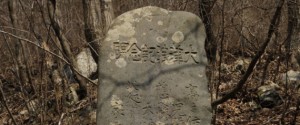The Somerset Levels and Moors are a low lying region prone to frequent flooding due to a range of environmental and human factors. The history of drainage and flooding in the Levels is rich and unique, yet its present condition is unstable and its future uncertain. Winter 2013-14 for example saw extensive floods in the Levels that attracted significant media attention and triggered debate on how such events can be mitigated in the future. The Land of the Summer People Science & Art project brings together engineering PhD students with local artists to increase public awareness and understanding of the Somerset floods. Scientific understanding and traditional engineering tools are combined with the artists’ creativity to prompt discussions about the area’s relationship with floods in a medium designed to be accessible and enjoyable.
Having worked on the early stages of this project researching the history and hydrology of flooding and drainage in the Somerset Levels I thought I was well prepared for the art stages to follow. I was decidedly wrong! The first workshop involved making a standard engineering-style poster containing information in the area our group had chosen to focus on; in my case the future of flooding in the region. This was a pretty standard summary of climate change impacts, land use change and a critique on the present policy which will shape the region over the next 5-20 years.
The next workshop saw us transform this information into a more ‘arty’ format. We chose a newspaper style article from 5 years in the future. In civil engineering (my undergraduate background) there’s a strong perception that the public don’t know anything about engineering and that they demand only bottom-up management towards their own interests; and this was definitely present in my article. Regardless of the truth or fallacy in this assumption, taking this attitude will not gain you public support for your project and, importantly, you will very likely miss out on important information that stakeholders could provide you with.
Each group began work with a Somerset artist to create art out of their topics and ideas. Our group is currently putting together a ‘flood survival kit’ containing items which aim to bring together ideas about the impacts and mechanisms behind flooding. Putting this together has been constant interplay between engineers looking to add purpose to items and our artist looking to reduce purpose with a much heavier use of metaphors/symbolism. Items include purpose-heavy hand-made water filters (from drinking bottles and sand!) and metaphor-heavy sponges and boats (made from Somerset clay).
Additionally our group will be inscribing rocks around Somerset with a text-number which will provide flood relevant proverbs or information when a message is sent to them. This was inspired by tsunami warning rocks in Japan!
 |
| An original tsunami warning rock in Japan courtesy of the Huffington Post, 4th June 2011. |
On 25th March, all the groups presented their projects in an exhibition in the Exeter Community Centre.
Our most valuable return on these projects are the skills in working with the public we will gain. After all, even capital projects designed with a stakeholder’s desires and demands in mind won’t work if the stakeholder rejects them. The pre-industrial history of the Somerset Levels illustrates this perfectly as drainage works in the region have typically been vandalised and prevented from working due to public opposition (an interesting contrast to the present dredging-heavy mentality!).
————————-
This blog has been reproduced with kind permission from the Bristol Doctoral College blog. It is written by Barney Dobson and Wouter Knoben who are currently studying engineering PhDs at the University of Bristol.
More about Land of the Summer People
This event was organised by Cabot Institute members Seila Fernández Arconada and Thorsten Wagener. Read more.
